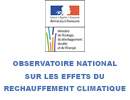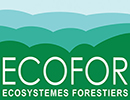Emissions of nitrogen oxides from soils. Measurement, modelling, land-use patterns and inventory. Impact on air quality, climate change and assessment of abatement possibilities.
Emissions of nitrogen oxides from soils. Measurement, modelling, land-use patterns and inventory. Impact on air quality, climate change and assessment of abatement possibilities.
This project deals with the biosphere-atmosphere exchanges of NOx (NO and NO2) considered as indirect greenhouse gases (precursors of troposheric O3). It involves four research units specialized in the study of the soil-plant-atmosphere interface and in atmospheric chemistry. The method used is based on a set of in situ and laboratory measurements, intended to fine-tune the parameterizations of existing emissions and to define new parameterizations adapted to French agro-ecosystems.
The in situ measurements were used to study the phenology of emissions in relation to relevant environmental parameters (such as meteorological, edaphic and agricultural parameters). Laboratory measurements were used to develop an algorithm of NO emissions according to three major parameters, i.e. temperature, humidity and ammonium nitrogen concentration in soils. This adapted and simplified algorithm was used to spatialize NO emissions on the national scale. This spatialization was carried out with spatialized environmental variables, directly provided by several databases (ECMWF) or indirectly extracted from farm surveys (amount of nitrogen used in fertilization, crop management sequences, land use patterns according to crop and region). The emissions were then extrapolated in time and space to yield the main result we were aiming at – the inventory of the emissions in a given reference year (2002) at the level of the whole country. This inventory allowed us to quantify the proportion of soil-generated NOx in the total emitted NOx, and the proportion of soil-generated NOx that derives directly from fertilization. According to our study, which is based on 57 % of the useable farm area in France, and extrapolating our results to the whole French arable land area, soils appear to emit approximately 5 % of the total NOx emissions, and only 20 % of these 5 % – which is a relatively low proportion of the grand total – appear related to the use of fertilizers. The impact of these emissions on atmospheric chemistry was assessed with the CHIMERE chemical-transport model. We found that almost everywhere the biogenic emissions of NOx were lower than industrial emissions, to a ratio of one to ten on average in France. It follows that the impact of these emissions on the daily ozone peak in June is relatively limited at the European level, but may locally reach 2 to 3 ppb in certain areas of the centre of France.
As a finishing touch to the project, this report summarizes the findings previously presented in the interim report of 15th April 2004 (I) and describes in more detail our achievements regarding the spatialization of emissions at the national level (II) and the impact of these emissions on the atmosphere’s chemistry (III). We will conclude by presenting a summary of our investigations, highlighting the elements that remain to be dealt with in order to complete the task we had initially set ourselves. The project’s main objective was to draw up a national inventory of soil-generated NO through the exploitation of in situ and laboratory measurements, the collection and integration of farm statistical data, and emission modelling. This inventory was first used to investigate the impact of NO emissions on NOx and O3 concentrations on the national and European scales.
| Coordinators |
Dominique Serça, CNRS – Laboratoire d’Aérologie UPS |
| Partnership |
CNRS – Laboratoire d’Aérologie UPS |
| Funding |
MEDD
|
| Budget |
95 000 € (including tax)
|




